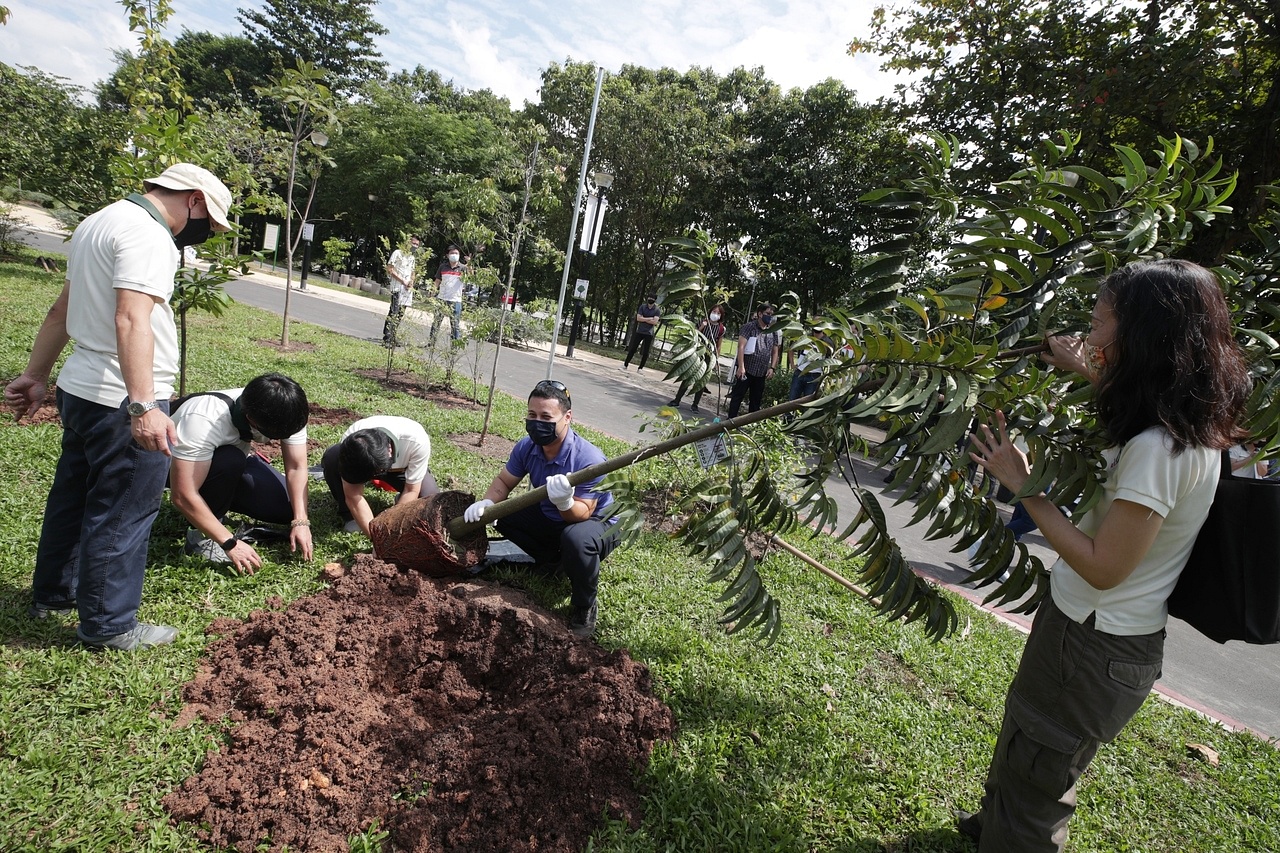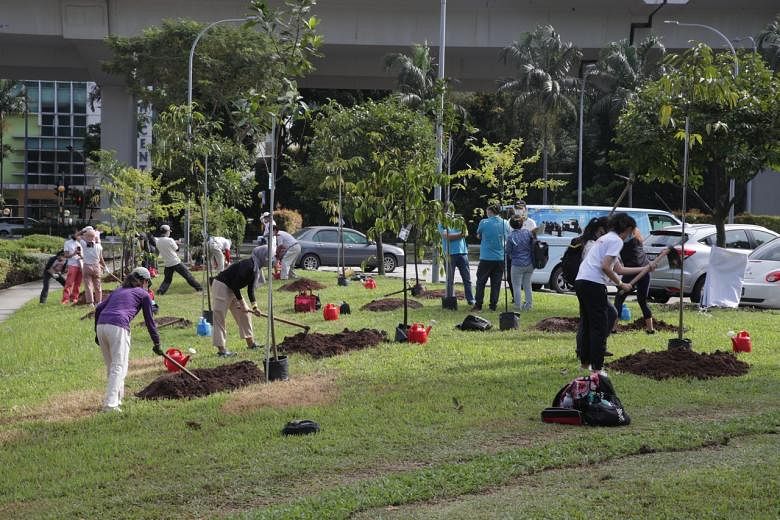SINGAPORE - The heavily industrialised West Coast of Singapore will by 2030 get an infusion of greenery that will include almost 40 new nature-based amenities, such as community gardening plots and therapeutic gardens.
Two nature-themed inclusive play areas for children are also on the cards in West Coast and Telok Blangah Hill parks, while industrial estates in the area will also be planted up with 150,000 trees - helping these urban heat hot spots cool down and making the environment there more comfortable for workers.
These were among the greening plans for the West Coast area announced by the National Parks Board (NParks) on Saturday (Sept 4) morning, during the opening of the first section of Pasir Panjang Park.
Minister for National Development Desmond Lee, who is also an MP for West Coast GRC, officiated the opening of the 450m-stretch of the park. Plans for Pasir Panjang Park were first announced in January last year.
This first stretch to be opened runs from Pasir Panjang MRT station to the Jalan Pelepah residential estate. The entire park is expected to be completed by 2026.
"(These) initiatives... are integral to our efforts to transform Singapore into a City in Nature," Mr Lee told the media at a virtual press conference.
"By enhancing greenery within the heartland and industrial estates, we aim to mitigate the effects of climate change and urbanisation and provide Singaporeans with a higher-quality living environment and greater access to the benefits of nature on their health and well-being."
The urban heat island effect is a phenomenon where urban structures such as concrete trap heat. It compounds the impacts of climate change, making urban areas much warmer than rural ones.
Under the greening plan for the area, NParks said it will also plant more at the upcoming MRT stations for the Jurong Region Line, expected to be completed by 2029. Stations in the area, including Buona Vista, Dover and Boon Lay have already been greened up, NParks said.
The Board also plans to work with ground-up groups such as the People's Association to create 30 new gardening spaces in the heartland by 2030. There are currently more than 120 community and allotment gardens in housing estates and parkland in West Coast.
Two new therapeutic gardens to help relieve mental fatigue and stress will also bloom by 2030 in Jurong Central and West Coast parks.
Another 24 community care facilities, such as those for seniors, have been identified as areas where therapeutic gardens or features could be installed, NParks said.
NParks had earlier collaborated with the National University Health System on two research studies to investigate the benefits of therapeutic horticulture on the mental well-being and cognitive functioning of the elderly.
The first study, which focused on healthy seniors, showed that there was an improvement in the psychological status, biological markers and immune cell composition of the participants.
The second study, carried out on elderly from senior care centres, showed that participants maintained healthy sleep patterns and psychological health, and showed significant reduction in anxiety and improvement in cognitive functioning.

For people and wildlife
The plans to green up the West Coast will also benefit Singapore's native wildlife.
More than 10 nature ways - or tiered roadside planting designed to mimic the multi-layered structure of forests - will be implemented. Six of them will be planted up over the next two years, NParks said.
These nature ways will serve as corridors for wild animals moving between Labrador Nature Reserve in the east and Sungei Buloh Wetland Reserve in the north.
These corridors had been mapped out by NParks in an effort to join up Singapore's green areas - an important project that aims to help native animals meet and breed in the Republic's fragmented forest landscape.
NParks also said that 14 sites located away from residential areas and close to green and rustic locations have been identified for "rewilding" , allowing wild flowers that captured the public's imagination during the circuit breaker last year to grow with minimal maintenance.

Native wild grasses will also be introduced to these sites to help make the habitat more conducive for Singapore's wildlife.
"We look forward to working together with the families and communities in West Coast to shape these plans and turn them into reality," said Mr Lee.
"In these ways, we aim to create more inclusive green spaces for all Singaporeans to enjoy."




